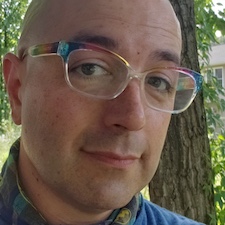Attending to Diffractive Cuts
The CUT draws intra-actively from translational relationships among film stock mattering and boundary making transitions and story telling topologies of the discrete and the continuous. As physical tape, film was cut apart and the cuts were joined. Spliced cuts reconfigured together to make new ontologies, new realities, renewed worldings of clips, splices, and dissolves…
Barad writes about diffraction as a process to attend to emergent differences through material-discursive practices (MtUH, 2006). Diffraction attends to cuts, apprehends traces of possibilities and agencies. Diffraction is also the phenomenon that defines as it knits together complementary and disruptive storytellings.
Cut to driving home, cut to drinking coffee, cut to a long pause between written word strings…cut to cutting together so many cuts while listening to poscasts. The work goes on and on.
The “cut” in media (e.g. film an audio) really captures the uses of the word as physical action to (re)configure a story and to archive something different. And so, I am making a short list for this post of terms in media editing as homologies for cuts in our STEM practices of Solar Ecology emergence.
- Hard Cuts affect the trace of stories as a direct, discrete switch through two input signals (like two cameras, live)
- Compositingentangles the matter of media and generates queer spacetimemattering, new topologies that defy linear time and voids across space. Composite cuts are made immediate in the archive, and at the same cut can be made from media centuries apart.
- The Vision Mixer: (re)configures traces of story among a multitude of media sources and composits video sources together. The process itself is used to create special effects in the archive. Apropos of putting the observer into the system being observed, in most of the world (just not the USA) both the equipment for compositing and the operator/mixer are called a vision mixer. So, in praxis, the vision mixer is a quantum superposition of both.
\[ VM = a| apparatus > +\ b| mixer > \]
- Non-Linear Editing (NLE) systems are phyicsal workstations and their users who perform collective, aggregation of non-destructive editing on source materials. The cuts from NLE generate new traces as metadata of timestamp, source, length, entry point, exit point, user ID. These fingerprints adhere to the saved clip as new sedimentations of determinate worlding.

